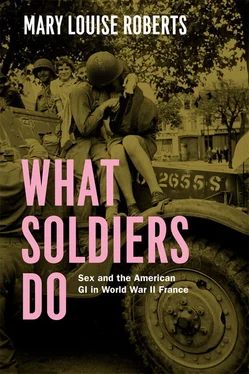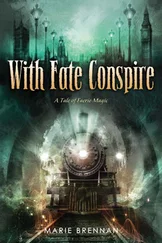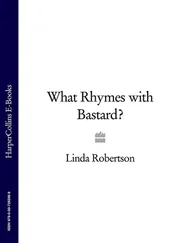206 New York Amsterdam News , 2 September 1944.
207 Richmond African American , 26 August and 14 October 1944.
208 Chicago Defender , 30 September 1944.
209 Baltimore African American , 7 July 1945.
210 Chicago Defender , 11 August 1945.
211 Chicago Defender , 11 August 1945.
212 Chicago Defender , 18 August 1945.
213 Chicago Defender , 21 July 1945.
1 La presse cherbourgeoise , 17 October 1944.
2 In particular the paper was responding to an incident that occurred in La Pernelle, east of Cherbourg. Three African American soldiers, Milbert Bailey, John Williams, and James L. Jones, were accused of raping a woman in La Pernelle, then murdering her father when he tried to protect his daughter. The three were condemned by court-martial on 14 December 1944 and executed in La Pernelle on 19 April 1945. See Holdings and Opinions, Board of Review, Branch Office of the Judge Advocate General, European Theater of Operations: Judge Advocate General Corps. Board of Review (Washington, DC: Office of the Judge Advocate General, 1943–46) (hereafter HOBR), Court Martial Case (hereafter CMC), 7518, 18:157–65; Archives Départmentales de la Manche (hereafter ADM), 145 W 26, Relations avec les autorités alliés, letter dated 16 October 1944; Hilary Footitt, War and Liberation in France (New York: Palgrave Macmillan, 2004), 85.
3 National Archives and Records Administration (hereafter NARA), Record Group 331, Records of Allied Operational and Occupation HQ, World War II (SHAEF) (hereafter RG 331), Entry 6, General Correspondence, 1944–45, Box 16, “Extracts of Censorship Submissions on Relations of Allied Personnel with Civilians” dated 24 November 1944.
4 Archives Municipales de la Ville du Havre (hereafter AMH), FC H4 15–6, letter of 18 November 1944.
5 Archives Départmentales du Calvados (hereafter ADC), 726 W 16 905, letter dated 5 November 1944. In this same dossier, see also the letters of 15 September and 3 October 1944, which refer to “the atmosphere of fear and worry” in the region of La Cambe and Maisy.
6 Archives Nationales, (hereafter AN), Séries AJ 384, Gendarmerie, synthèse pour la période du 15 octobre au 15 novembre 1944.
7 ADC, 9 W 45, Rapports du préfet, rapports mensuels et bimensuels, 1945, report dated 23 December 1944.
8 US Army Judiciary, Arlington, Virginia (hereafter USAJ), CMC 4194, Richard Scott, 4.
9 AMH, FC H4 15–6, letters dated 10 September 1945 and 8 October 1945.
10 ADM, Rapports américains, 13 num (hereafter 13 num) 3051 and 13 num 3136.
11 ADM, 1366 W, Comité vérité historique, Liberté 44 , la Manche témoigne: de l’occupation à la libération; les Manchois se souviennent (hereafter MT ), témoignage de Madame Dold-Lomet, 285.
12 ADM, 1366 W, MT , Colette l’Hermitte, “La bataille de Carentan,” 625. See also ADC, 13 T II/44, Liberator , 30 June 1944.
13 NARA, RG 331, Entry 54, General Staff, G-5 Division, Information Branch, Historical Section, Numeric-Subject Operations File, 1943–July 1945 (hereafter Entry 54), Box 111, Relations with General and Special Staffs, Psychological Warfare Division (hereafter Box 111), report dated 25 June 1944. See also ADM, 13 num 3039 and 13 num 3105.
14 Footitt, War and Liberation , 76.
15 NARA, RG 331, Entry 54, Box 111, report dated 14 August 1944.
16 René Herval, Bataille de Normandie: récits de témoins recueillis et présentés par René Herval , 2 vols. (Paris: Éditions de “Notre Temps,” 1947), 1:191, 195. See also 1:204.
17 Jacques Petit, Au coeur de la bataille de Normandie: souvenirs d’un adolescent, de Saint-Lô à Avranches, été 1944 (Louviers: Ysec, DL, 2004), 20, 23, 98. See also Herval, Bataille de Normandie , 1:38.
18 Prashant Bordia and Nicholas DiFonzo, “Problem Solving in Social Interactions on the Internet: Rumor as Social Cognition,” Social Psychology Quarterly 67, no. 1 (March 2004): 34. See also Warren A. Peterson and Noel P. Gist, “Rumor and Public Opinion,” American Journal of Sociology 57, no. 2 (September 1951): 160. Here the author argues that “sex deviation” is a frequent subject of rumor. In the French historical literature, see Marc Bloch, “Reflexions d’un historien sur les fausses nouvelles de la guerre,” Mélanges historiques , 2 vols. (Paris: S.E.V.P.E.N., 1963), 1:41–57; Alain Corbin et al., eds., De bouche à oreille: naissance et propagation des rumeurs dans la France du xixe siècle; collection historique (Paris: Aubier, 2003).
19 NARA, RG 331, Entry 54, Box 111, report dated 25 June 1944. For a French acknowledgment that rumors were circulating, see Marcel Leveel, Rails et haies: la double bataille de l’Elle et de Lison (Marigny: Éditions Eurocibles, 2004), 126.
20 ADM, 13 num 3051.
21 ADM, 13 num 3046.
22 ADM, 13 num 3045.
23 ADM, 13 num 3084.
24 Timothy Tackett, “La grande peur et le complot aristocratique sous la Révolution française,” Annales historiques de la Révolution française 333 (2004): 15–17.
25 Georges Lefebvre, The Great Fear of 1789: Rural Panic in Revolutionary France (Princeton, NJ: Princeton University Press, 1973), 159. For other instances in French history where rumor has played an important historical role, see Alain Corbin, Le village de “cannibales” (Paris: Flammarion, 1999), and Jean-Yves Le Naour, Le corbeau: histoire vraie d’une rumeur (Paris: Hachette Littératures, 2006).
26 Les Archives de la Préfecture de Police, Paris (hereafter APP), BA 1822 Libération. This thick file contains scores of police reports with charges against American soldiers for theft and fighting, but not a single rape case. The archive also holds ( sous dérogation ) dossiers concerning African American soldiers charged with homicide, but again there are no accusations of rape. See also AN, F1a 3350, report dated 12 December 1945; Louis Chevalier, Les ruines de Subure: Montmartre de 1939 aux années 80 (Paris: Éditions Robert Laffont, 1985), 82, 91–92.
27 US Army, Twelfth Army Group, Final After-Action Report , 15 vols. ([Bad-Hamburg?]: Twelfth Army Group, 1945), 10:225.
28 Brett A. Berliner, Ambivalent Desire: The Exotic Black Other in Jazz-Age France (Amherst: University of Massachusetts Press, 2002), 237.
29 Antoinette Oriot, La fille du boulanger (Charenton-Le-Pont: Presses de Valmy, 1998), 351. See also Elizabeth Coquart, La France des G.I.s: histoire d’un amour déçu (Paris: Albin Michel, 2003), 77; André José Lambelet, “‘ Liaison Factice ’ and ‘ Schwarze Schande ’: Black Soldiers, French Officers, and the Ideology of Conscription,” Proceedings of the Annual Meeting of the Western Society for French History 28 (2002): 271–81; Christian Koller, “Race and Gender Stereotypes in the Discussion on Colonial Troops: A Franco-German Comparison,” in Home/front: The Military War and Gender in Twentieth-Century Germany , ed. Karen Hagemann and Stephanie Schaler-Springorum (New York: Berghahn, 2002), 141.
30 Tyler Stovall, “Love, Labor and Race: Colonial Men and White Women in France during the Great War,” in French Civilization and Its Discontents: Nationalism, Colonialism, Race , ed. Tyler Stovall and Georges van den Abbeele (Lanham, MD: Lexington Books, 2003), 299–300. See also William H. Schneider, An Empire for the Masses (Westport, CT: Greenwood Press, 1982), chap. 7.
31 Arthur E. Barbeau and Flotette Henri, The Unknown Soldiers: Black American Troops in World War I (Philadelphia: Temple University Press, 1974), 143. During this war French women from Lorraine brought charges of rape against black soldiers. See Adriane Lentz-Smith, “Settling Mr. Negro: African Americans at War in the Terrestrial Heaven,” unpublished ms., 2, and see also Lentz-Smith, Freedom Struggles: African Americans and World War I (Cambridge, MA: Harvard University Press, 2009); Régine Torrent, “L’image du soldat américain en France, de 1943 à 1945,” in Les américains et la France, 1917–1947: engagements et représentations , ed. F. Cochet et al. (Paris: Maisonneuve et Larose, 1999), 237; Jean Bazal, Marseille galante (Marseille: Éditions Paul Tacussel, 1980), 63.
Читать дальше












